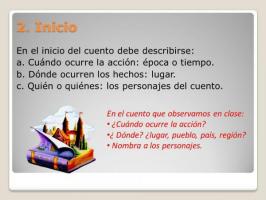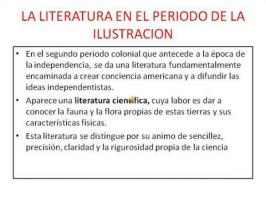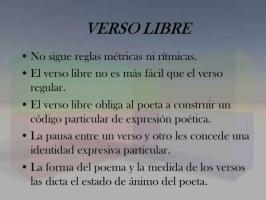The 5 ELEMENTS of literary language

We usually use the literary language in order to communicate from an aesthetic approach. That is, it is not the language that we use informally, but one in which different grammatical and stylistic resources are used to tell an idea or story. Properly this type of language is used in the narrative and dramatic genre. In this lesson from a TEACHER you will learn what are the elements of literary language.
The language changes depending on its use. If we give a speech, if we talk with a family member, if we write a report or if we write a novel, communication varies, because the intention and our objective is different. Against this it is usually classify language in two types:
- Natural language: It is one that has evolved over time and we use in informal human communication. Beyond the grammar rules, this language changes in its daily uses and the way we appropriate it to talk to other people.
- Artificial language: It is one that, through lexical components, grammatical rules and semantic boundaries, seeks to give an order to communication and language, whether written or oral. Unlike the natural language that is learned in daily interaction, artificial language is usually learned from the rules that compose it and its various objectives.
In the case of literary language we refer to a type of artificial language that is used in the production of literary texts. There language acquires a poetic function; takes care of beautifying the language while communicating. In this way, this type of language uses verse and prose as well as different resources such as rhetorical figures, a wide vocabulary and the secondary definition of some words to build metaphors or narrative images.
Although literary language is associated with literature, disciplines such as journalism have made use of it to give their chronicles and reports expressive force. We can also find it in speeches and essays.
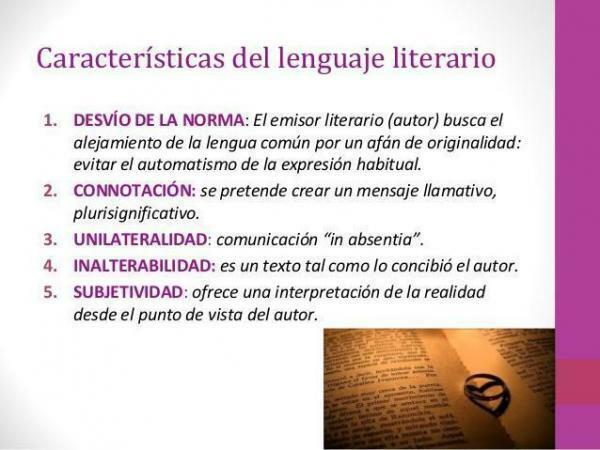
Like any process of communication there are a series of elements that allow its transmission. As the RAE indicates, an element is understood as a constitutive part of something, a foundation or means by which something develops. In this case there are 5 elements that allow the existence of literary language.
Transmitter
The sender is the one who transmits the message, in this case, who seeks to generate emotions or share an idea in communicating it. With regard to literary language, the issuer endows the message with expression, aesthetics and creativity, he or she is the author who seeks to convey something to her readers.
Receiver
The receiver It is the one who receives the message of the communicative process. In this case, the potential reader. It is perhaps the cornerstone in literary language, since the assumption of a receiver invites the sender to build the story of it and pretend to deliver a message.
Channel
The channel is the medium through which the message is delivered that the sender wants to transmit to the receiver. This element endows literary language with a crucial characteristic: its one-sidedness. Since this type of language usually uses the written medium (books), feedback from the receiver to the sender is not possible after receiving the message. This does happen in verbal communications such as debates or in the case of written communication in letters, with letters.
Context
The context refers to specific time and space in which communication occurs. Here we must also take into account the social and cultural factors accompanying her. In the case of literary language, the time in which a work is produced often marks the freedom and ideas of the author. It is not the same, for example, to write a novel about sexuality in the 19th century than in the 21st century. As surely it will not be the same to write it in Vietnam as in Poland.
Code
With the codes we refer specifically to the signs that we use to transmit the message. It is, so to speak, the formal element of literary language. It has to do with the linguistic character. However, it also refers to the way in which the author encodes the message through his characters, the story and the symbolic resources that he uses to narrate.
Now if we were to do a general scheme of the elements of literary language we could say that the issuer is the author who, through a book, his channel, uses a code to create a message that he seeks to transmit to a receiver: the readers. In addition, this entire process would be marked by a context that determines both the sender's message and the interpretation that the receiver will give.
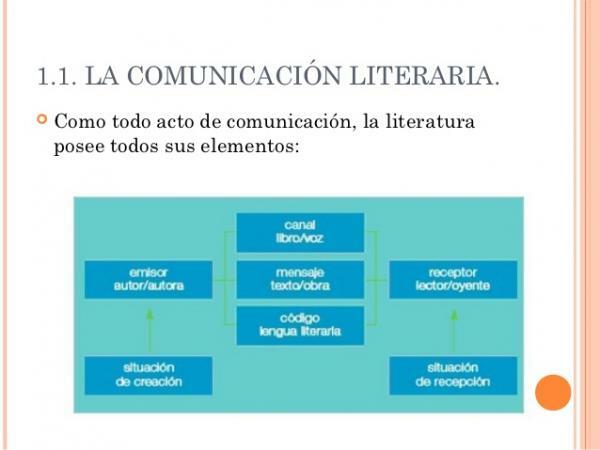
Image: Slideshare

